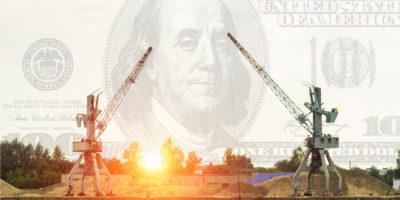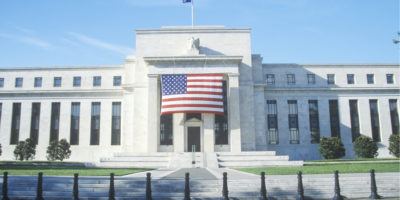When Did the Bank of England Become a Lender of Last Resort?
The most profound of functions that central banks around the world engage in is being the lender of last resort (LOLR). At its core, it means that the Fed stands ready to lend to banks during times of financial trouble that, absent the Fed’s lending, would cause large-scale damages to other banks or the functioning of the financial system overall.
Provided it does not place (excessive) risks with the Fed, the textbook way for a central bank to fulfill the LOLR task is usually summarized as lending freely, on good collateral, at a high (sometimes “penalty”) rate of interest. Varyingly known as Bagehot’s “rules,” “principles,” “maxim,” or “dictum,” the meaning of the policy has been for central banks to lend freely to illiquid but not insolvent firms. That is, central banks ought to assist temporarily illiquid firms, but not help propping up fundamentally insolvent ones.
Of course, it is doubtful whether solvency can even be meaningfully established in the midst of a financial meltdown, or at which prices a bank’s assets ought to be taken — pre-crisis, post-crisis, some long-run fundamental value, or the mark-to-market price that, in extreme liquidity conditions, no longer exists? Such decisions make distinctions on both sides of the solvency line very blurry, arbitrary, and often meaningless — and allow central banks quite a lot of leeway in making decisions of when to extend emergency lending.
Another point often taken for granted is that central banks are best situated to provide LOLR assistance since they have unlimited abilities to provide liquidity and through their market dealings and supervisory responsibilities have superior information to that of market actors. Both these positions are highly doubtful; taken to its extreme, no central bank can provide “unlimited” liquidity without completely ruining the financial system, and the extent to which central banks actually have superior information regarding the solvency of financial firms seems rather small.
The Bank of England and Its Gradual Development
America’s relationship with its central bank has always been a bit special. Far from the standard case among other Western countries, the Fed was established rather late and with the combating of financial crises at its forefront. In contrast, most Western European countries created “proto–central banks” for a whole range of different reasons during the centuries preceding the Fed’s creation in 1913.
An interesting debate among financial historians that has recently been re-awakened by a series of data publications by the Bank of England’s staff is the question of when exactly the Bank of England took on LOLR responsibilities. The Bank’s history was always one of experimentation, of gradually learning its craft and adapting to changing economic and institutional environments. It was established in 1694 by royal charter but with private shareholders, with the explicit purpose of raising revenue for the government, and over the 18th century established its private business. For all intents and purposes, it was just another company — albeit with certain government privileges.
The Economist editor Walter Bagehot argued in 1873 in his famous book Lombard Street (the book that laid out the principles underlying all central bankers’ LOLR policies) that over the course of the financial panics in mid-19th century London (1847, 1857, and 1866), the Bank gradually learned how to support the panic-ridden markets and act as an LOLR. By taking on more responsibility for the financial markets — moving away from maximizing profits for its shareholders — it became a modern central bank, taking on what we could call “financial stability” considerations.
Quite a lot of other qualitative arguments have been advanced over the timeline for incorporating the LOLR role into the Bank’s activities. Some suggest several crises earlier, even before 1825; others, like the Bank scholar Ranald Michie, suggest much later, around World War I. Is there a more precise way to establish when the Bank of England started acting like an LOLR?
In two influential papers in 2012 and 2013, Vincent Bignon, Marc Flandreau, and Stefano Ugolini attempted precisely this. By using a financial-arbitrage idea about the spread between a safe market rate and the Bank’s own lending rate, the authors recognize that a true LOLR cannot be rationing credit in a crisis; if it were rationing credit, the Bank could not have lent freely, and so was not an LOLR.
If the Bank were supplying funds freely in a panic — as it should have according to Bagehot’s rules — nobody would lend at a higher market rate, and the spread would disappear. Bignon, Flandreau, and Ugolini then show that for months leading up to the so-called Week of Terror in the financial crisis of 1847, the market rate of interest is much above the Bank’s own rate, indicating credit rationing by the Bank. In the next crisis, 1857, this tendency is almost entirely gone — and in both 1857 and 1866, the post-crisis spread turns negative, meaning that the market rate falls below the Bank rate, consistent with the behavior of a freely supplying LOLR.
So, the Bank became an LOLR sometime after the crisis of 1847.
Not so fast. There are at least two problems with this argument. First, if you do what Bignon, Flandreau, and Ugolini did for the mid-19th century crises and construct a “market-rate/Bank-rate spread” all the way to World War I (data freely available in the Bank of England’s historical data set), the turning point between 1847 and 1857 seems much less important. For long periods in the 1870s, and frequently for the next two decades, we observe precisely the same tendencies as in 1847 for the market rate to go above the Bank rate during recessions. The spread is over 100 basis points in the midst of 1873; the spread is positive again around the collapse of the City of Glasgow Bank in 1878, when financial contagion to English banks was a serious problem; and it is positive again during the Barings crisis of 1890. Banking historian Forrest Capie’s summary is not unfounded:
[In] the nineteenth century it was not always possible to predict the behaviour of the Bank. Sometimes it came to the rescue of the market and sometimes it did not. Sometimes it helped out institutions and at others it did not.
Second, if we look at some indicators for the rest of the banking system, we get some hint about the fickle nature of the Bank’s LOLR activities. A credible LOLR standing ready to support illiquid banks would induce commercial banks to (a) hold less equity as the default risk from illiquidity-induced fire sales is smaller, and (b) reduce their holdings of liquid assets, such as cash and easily sold British consols (long-term government debt) since the purpose of liquid assets is to insure against illiquidity, which the Bank is now meant to provide. In the second half of the 19th century we see neither of those tendencies. Indeed, following each of the financial crises in 1866, 1878, and 1890, when the Bank was allegedly well-established as an LOLR, commercial banks increased their liquid positions to permanently higher levels. We see the opposite of what we would see had the commercial banks trusted the Bank’s newfound liquidity assistance.
In summary, Bagehot’s rule (principles, dictum, maxim) that a lender of last resort ought to lend freely to illiquid but not insolvent firms is the main guide for crisis-fighting modern central banks. It includes a lot of loose ends that allow central bankers leeway in making those decisions. Establishing when precisely the Bank of England — as the first modern central bank to embrace Bagehot’s rules — did so in practice is a current debate among financial historians that still hasn’t quite crystallized.










